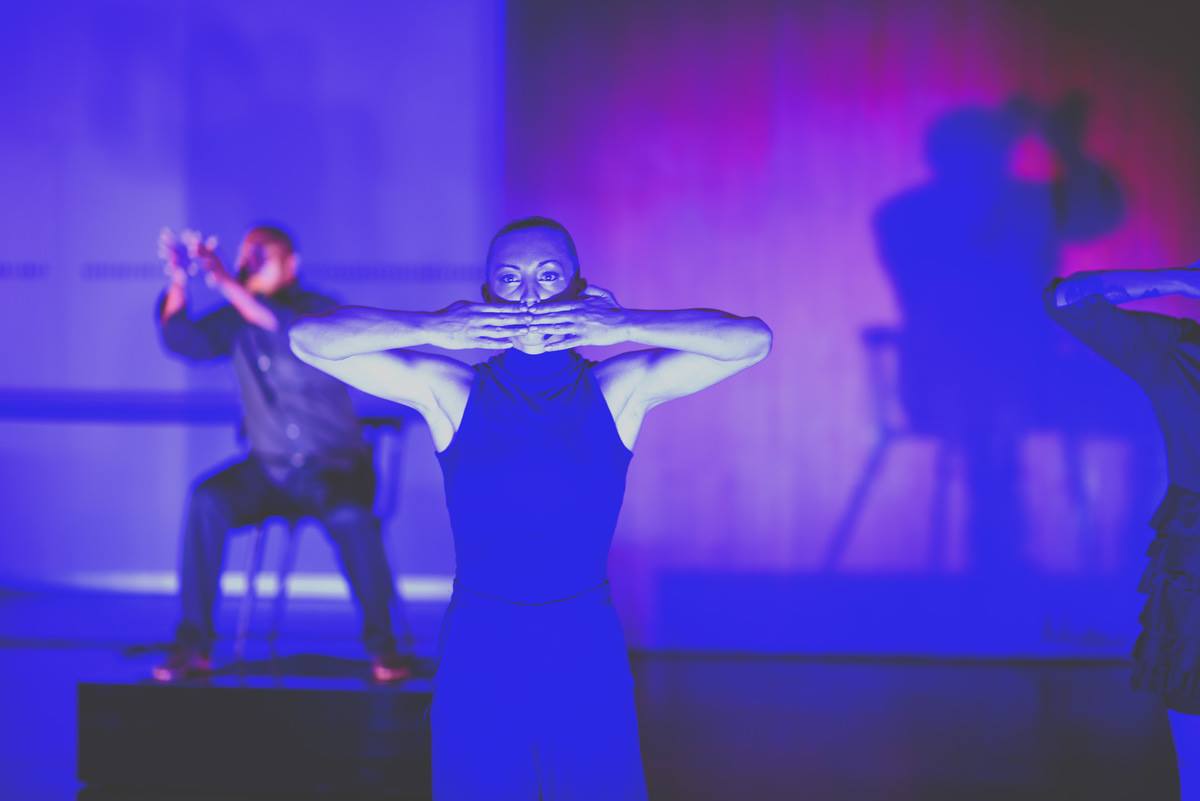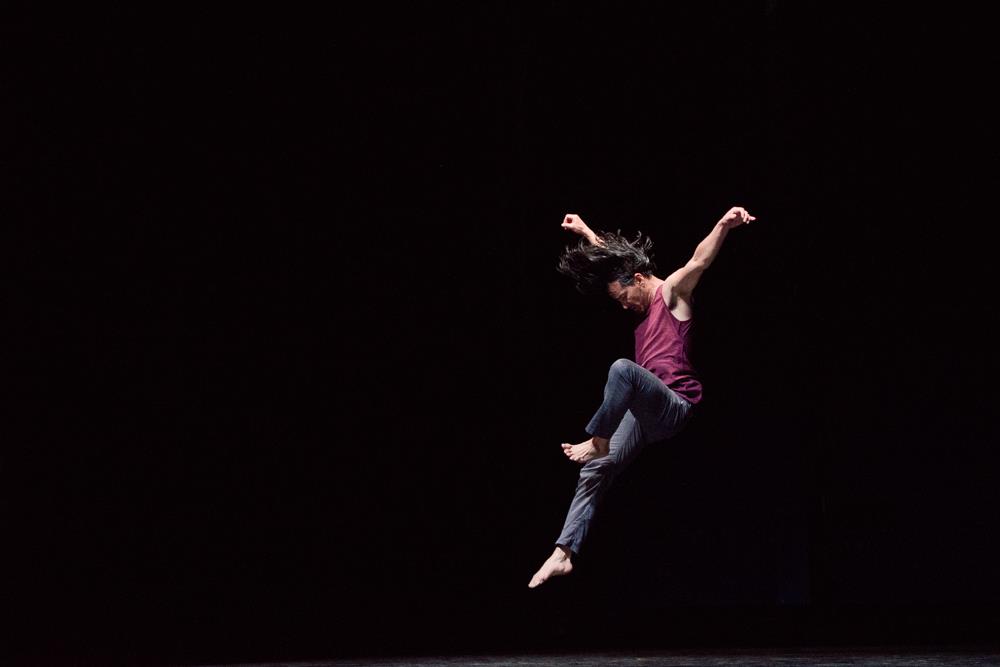Industry, productivity, labor, ritual, depletion, exhaustion.
These are some of the themes that emerged while watching Now-ID’s Rite of Spring. Even the path to the stage, surrounded by railroad tracks, chain-link fencing, and brick and concrete block buildings, felt like part of the performance.
The raised stage underneath the 600 North on-ramp (498 West 600 North) emerged like a destination in the midst of this industrial setting, an oasis for people curious to see what unfolds when an opera singer, four phenomenal dancers, and Igor Stravinsky’s landmark score come together to create an event. The performance began at 9 p.m. and ended less than an hour later, just as the sky had darkened and night had come.
Now-ID’s Rite was a study in contrasts: between the vibrancy of the dancing and the desolation of the landscape that surrounded it, between the glimpses of mountains and the concrete that surrounded the stage, between the timelessness of the music and the ephemerality of this moment, between the perseverance of the performers, and the ultimate collapse that ended this Rite.
Avoiding an explicit narrative, Rite unfolded as a series of images: beginning with the four dancers seated on stools at the corners of the stage. Evoking boxers waiting on the edges of a ring, they seemed focused and primed. Jo Blake stood, as if to signal the beginning of a ritual, and slowly walked by the other dancers (Sydney Sorenson, Liz Ivkovich, and Tara McArthur) to greet Joshua Lindsay as he stepped onto the stage and began singing. Lindsay’s voice, sonorous and lush, heightened my attunement to sensorial engagement, of letting the sounds, sights, and actions of this event convey meaning.
When Lindsay exited, Stravinsky’s score began, and Blake’s solo presented a transformation: from human to extra-human, with arms that morphed into wings as if he were performing an invocation. He danced like he was propelled by forces, and the clarity and strength of his performance was mesmerizing to watch.
Although the performance was choreographed by Charlotte Boye-Christensen, with Nathan Webster providing the concept, the dancers made their ideas into realities with a performance that was impressive in terms of both stamina and precision. Each dancer presented distinct qualities, while also maintaining a sense of coherence. Sorenson danced with a rare combination of power and extension. Ivkovich had a compelling expansion to her movement, limbs stretching away from her center of gravity in ways that seemed to resist gravity. McArthur presented a flickering, quicksilver quality, with movement that was so fast it seemed superhuman.
In unison sections the women generated a sense of solidarity, bounding across the stage with a loping gait that seemed to gain momentum as they moved. At other times, the four performers divided into pairs that suggested rival tribes: Ivkovich and McArthur wore red-ish pants that contrasted with Blake’s and Sorenson’s attire. In partnering sections, they seemed to engage in combat, like wrestlers grappling.
Tara McArthur and Jo Blake in NOW-ID’s Rite of Spring, in costumes by Mallory Prucha. Photo by Jeffrey Juip.
The costumes, by Mallory Prucha, added to the rough and exposed environment: pants were made of heavy cotton (“monk’s cloth”) but shredded at the hems and stained with dark streaks. Make-up and hair by Stephanie Ericson, Rikki-Lee Thomas, Brittany Botarri, Kevin Truong, and Vanessa Alfaro enhanced the sense of severity with body paint and spiky hairstyles. As the performance continued, the body paint disintegrated, leaving traces of colors just as the surroundings presented traces of former industries and communities.
It’s hard to decipher the connections between this landscape and this Rite: in some ways the choreography presented a familiar tale of a woman’s sacrifice for the betterment of a community. In other ways, the dancers seemed to be exposing the exhaustion and depletion of cultures and sectors that are no longer sustainable or viable, perhaps suggesting that we become more judicious in where we invest our energies and resources. No matter the interpretation, the dancers’ commitment to the choreography was impressive, and their ability to execute the phrases while maintaining a sense of understated calm was riveting. Each one is a compelling artist, and the lighting design by Cole Adams made it appear, at times, as if their bodies were glowing. A gorgeous and appropriate effect.
NOW-ID’s Rite of Spring, with lighting by Cole Adams. Photo by David Newkirk.
Kate Mattingly is an assistant professor of dance at the University of Utah. She has a doctoral degree in performance studies from UC Berkeley, and has had writing published in The New York Times, The Village Voice, Dance Research Journal, Dance magazine, and Pointe magazine, among others.









